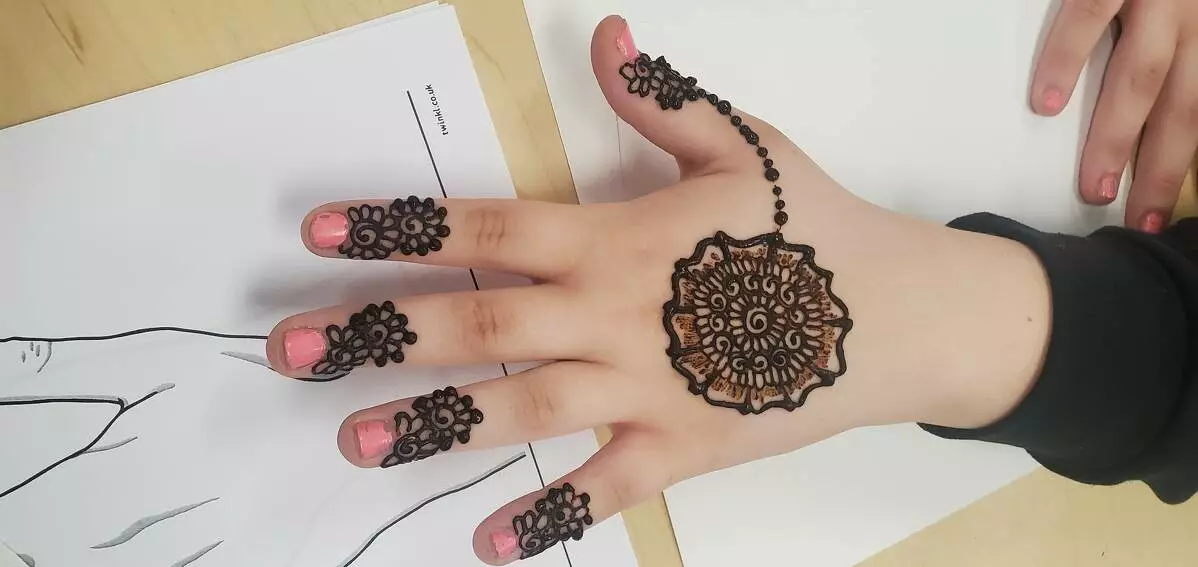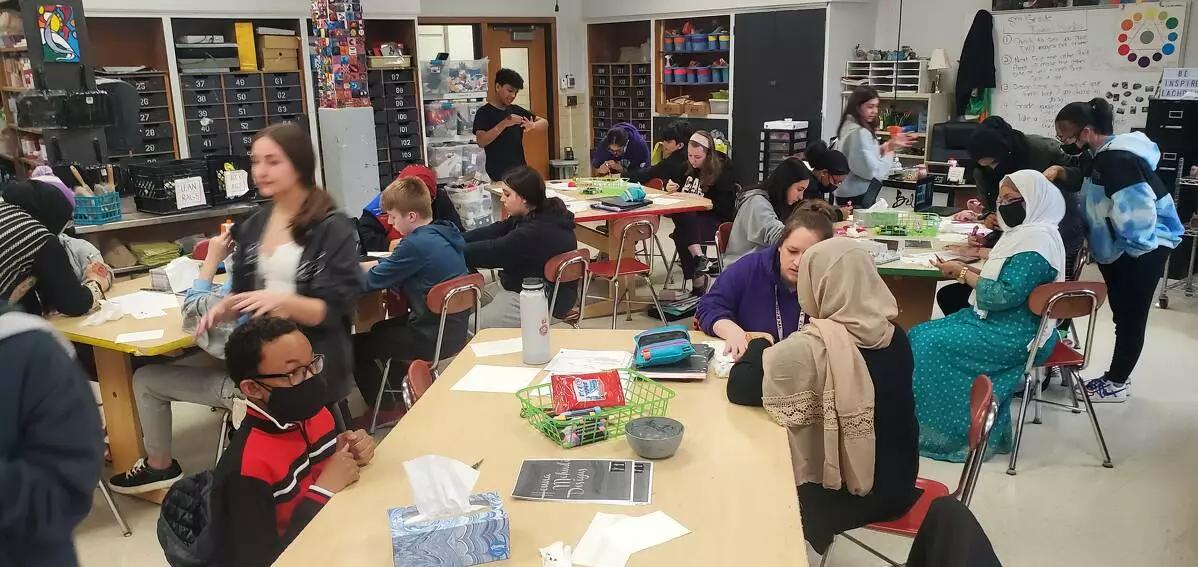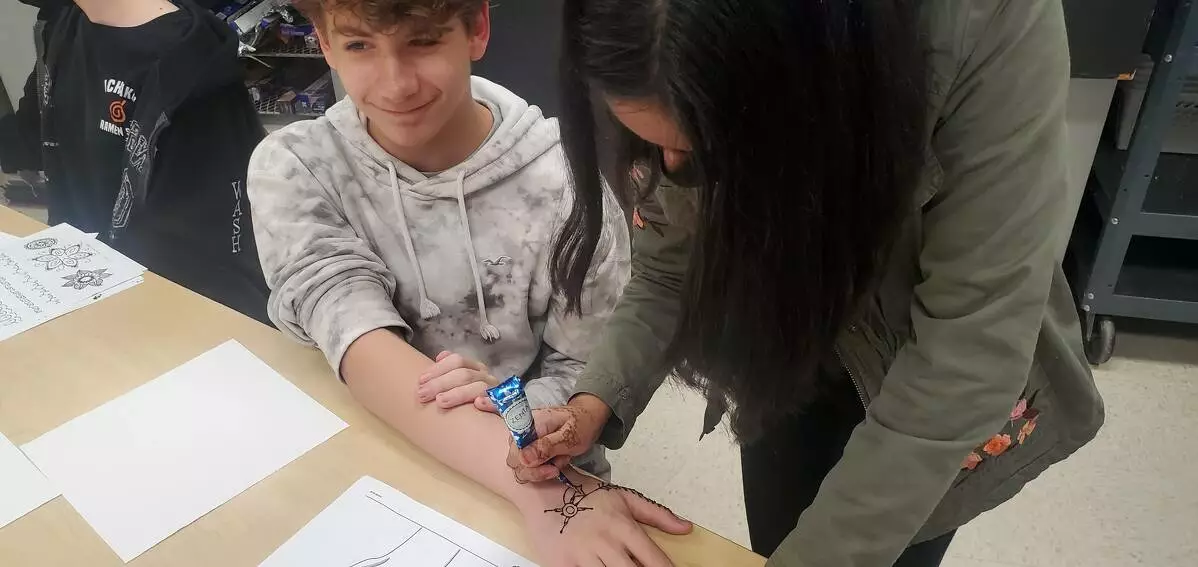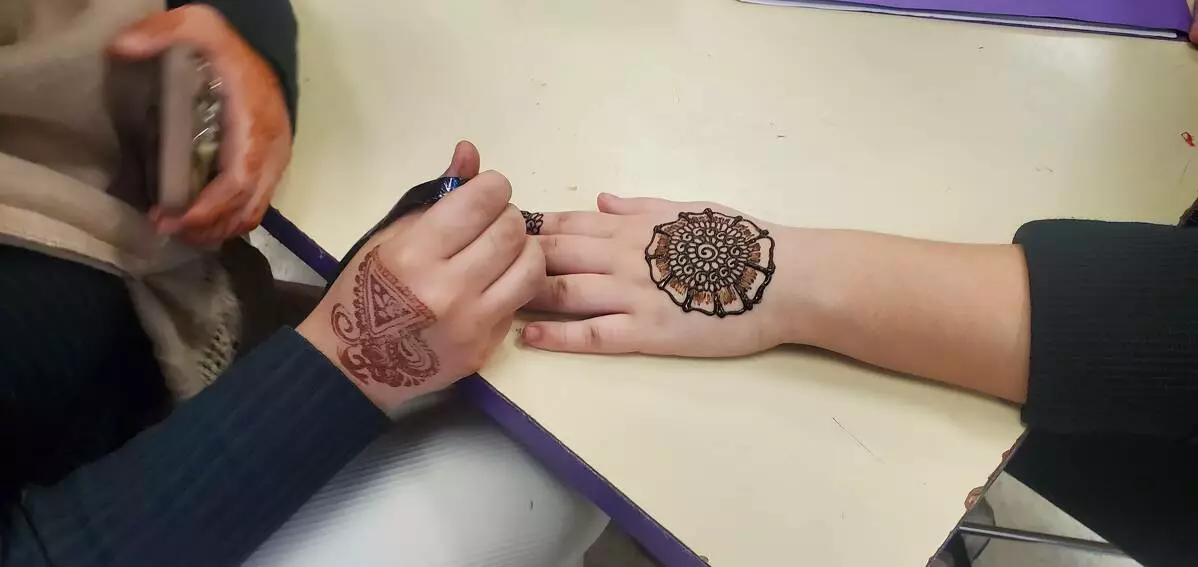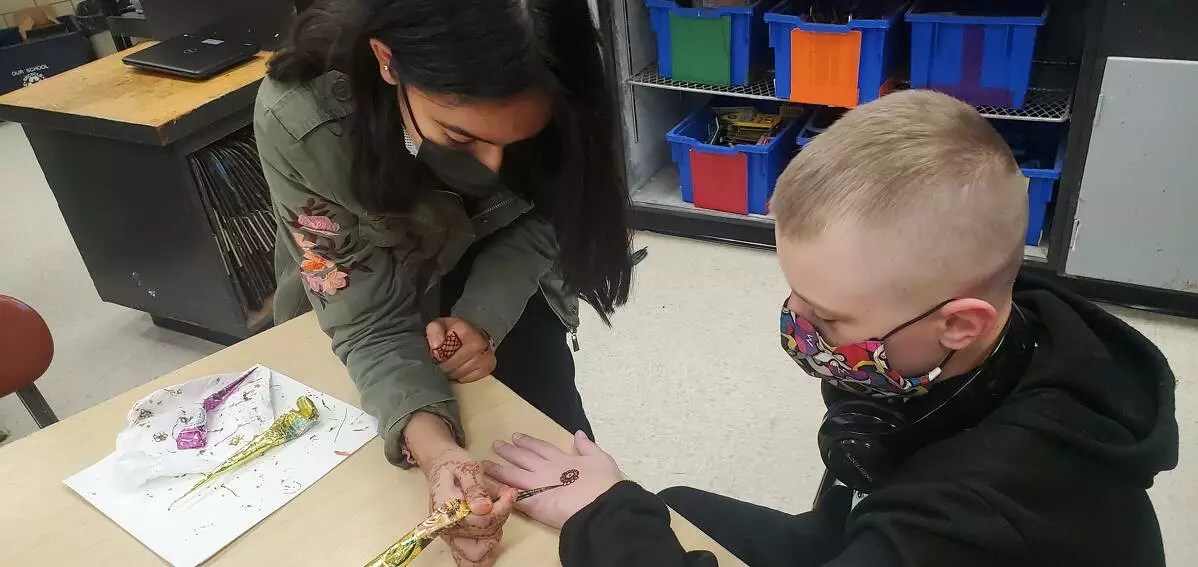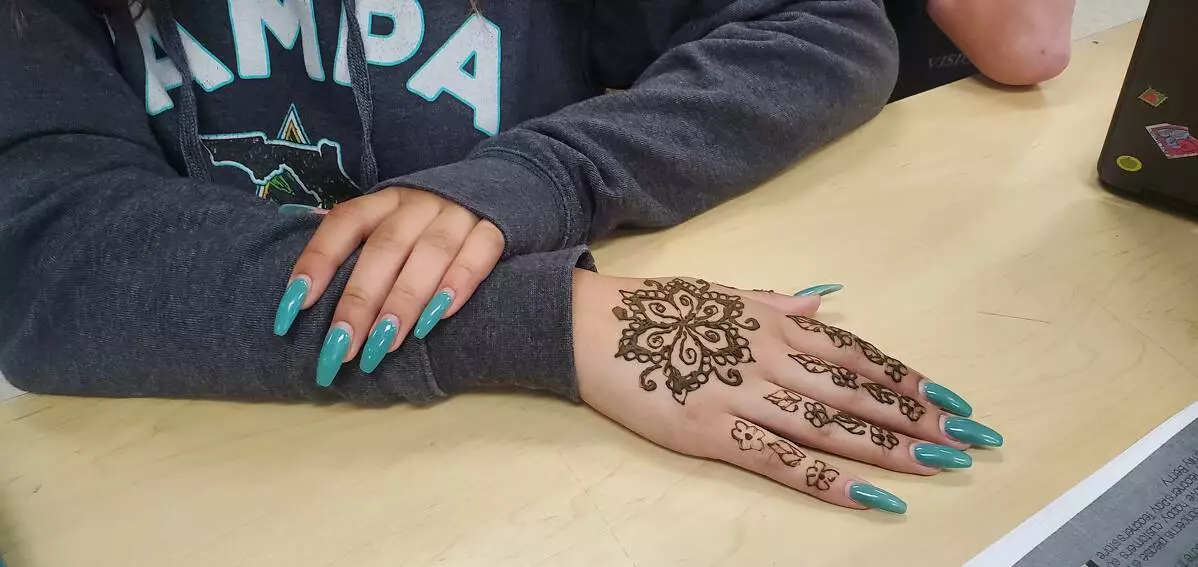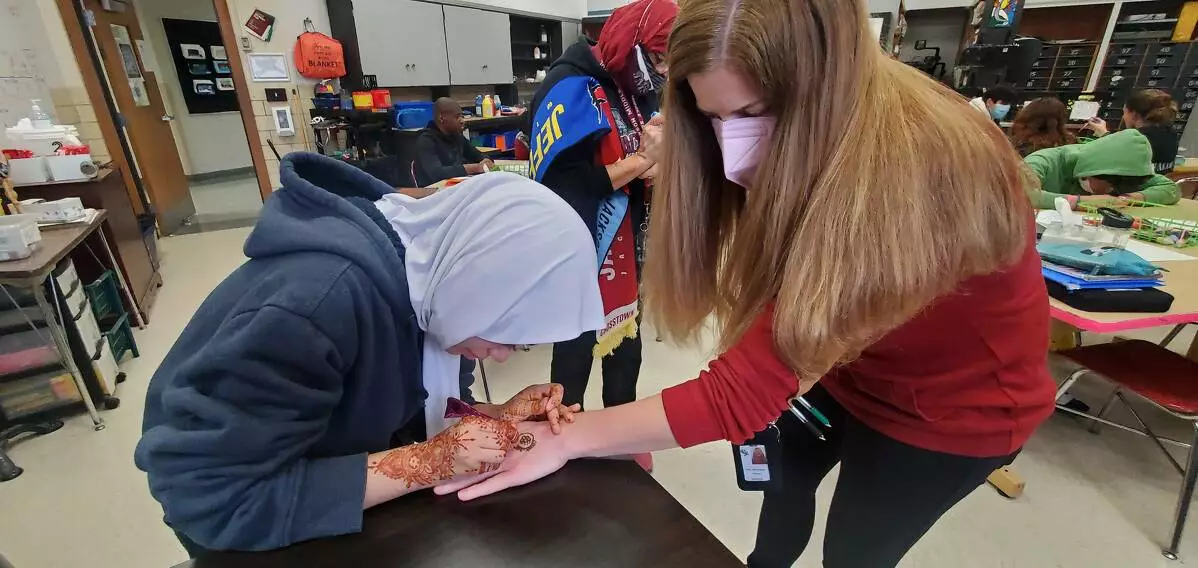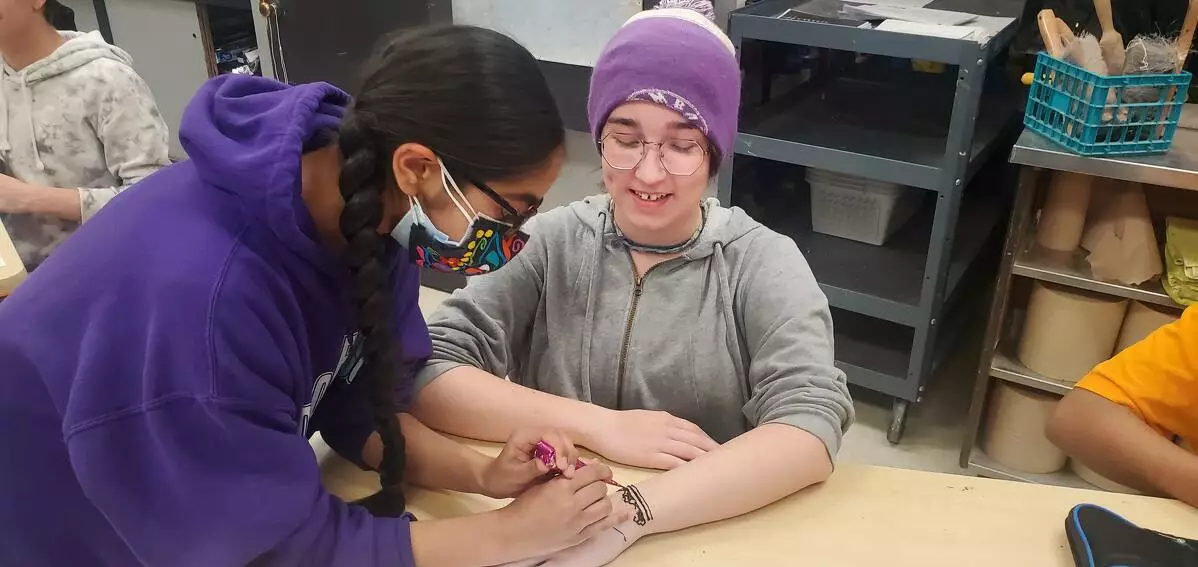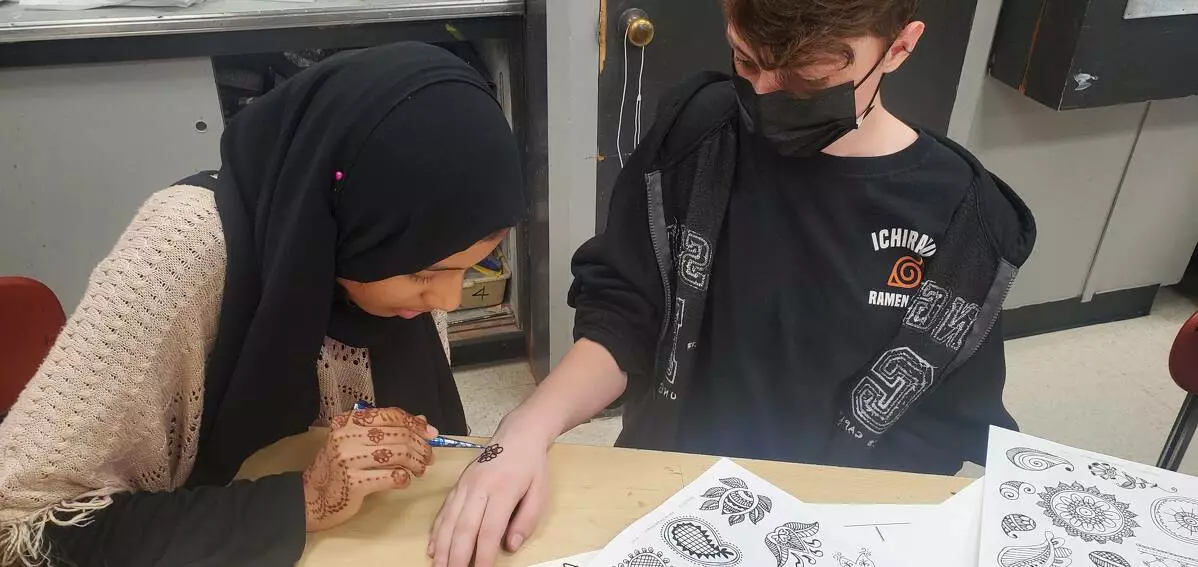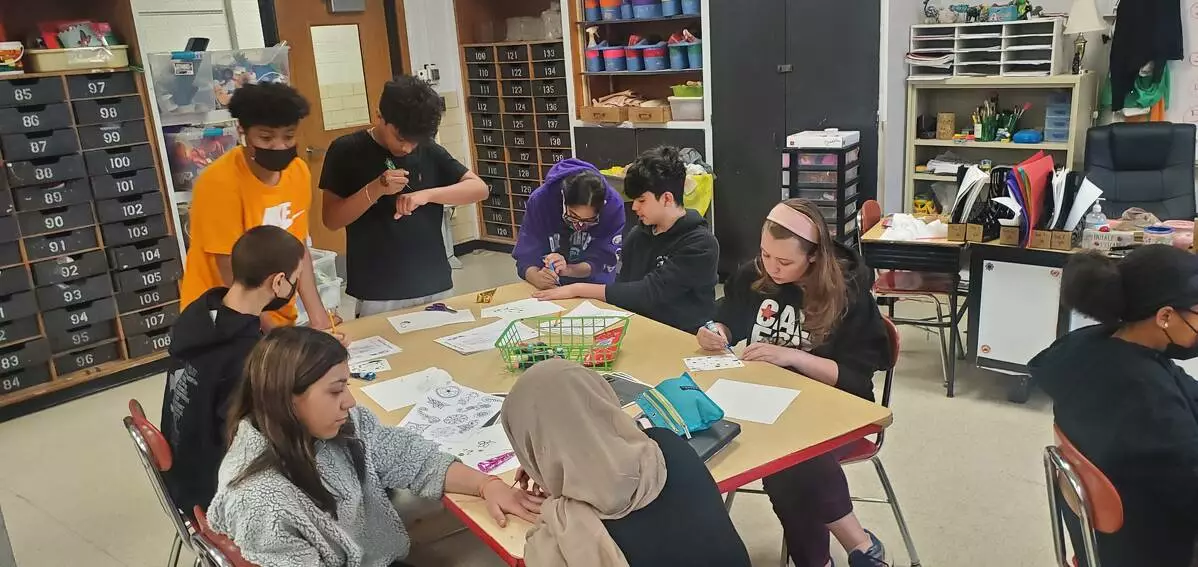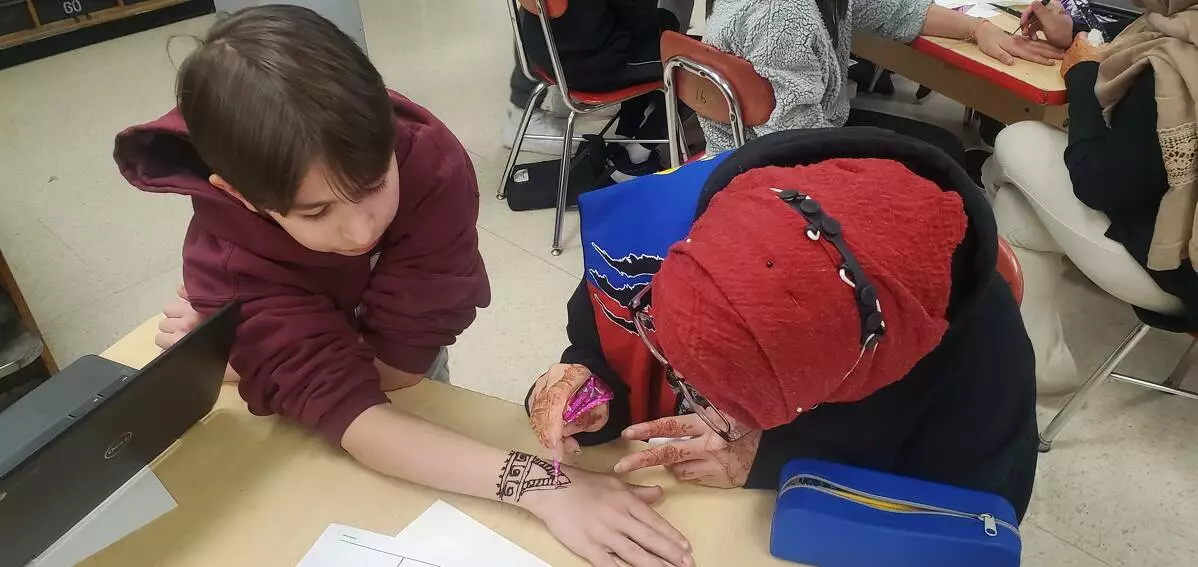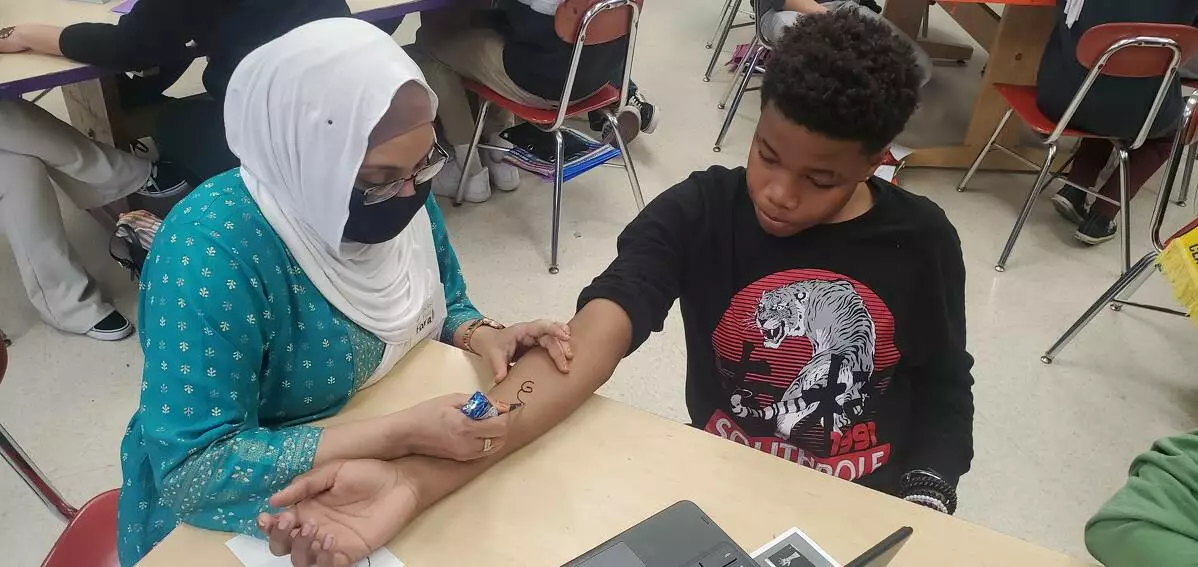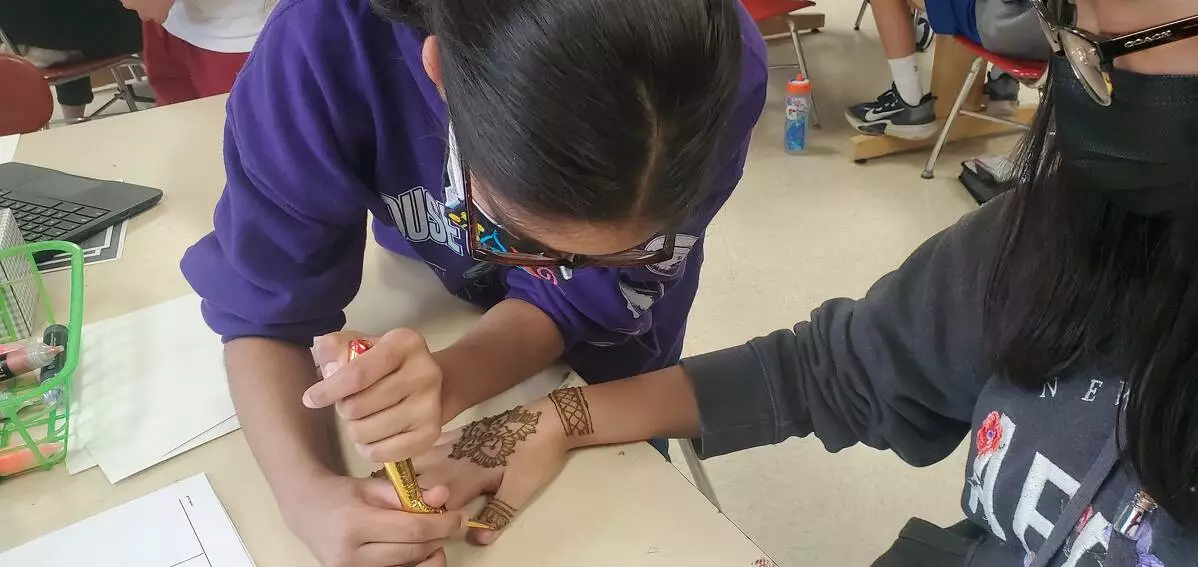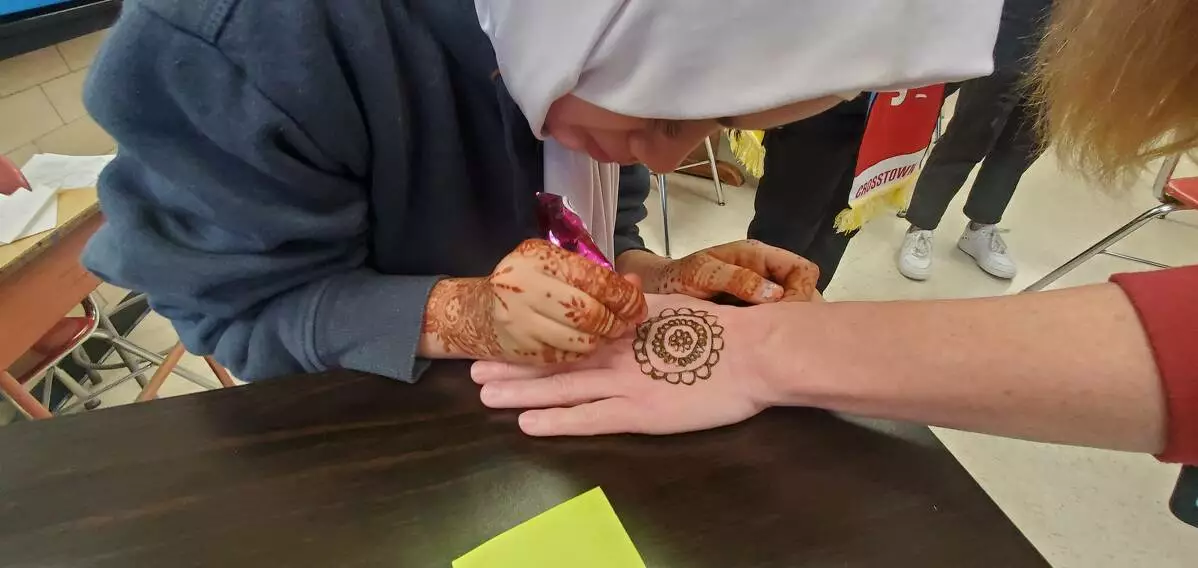On May 6-9, students in Ms. Tara Challenger’s 8th-grade art classes at Jackson Middle School had a unique experience as they learned about the practical and artistic uses of Henna in many cultures.
As part of the lesson, students were given the option to either create a henna design on their hand or on paper or create a henna-inspired design using fabric paint pens on paper.
Students learned about the history and origins of henna design and how western culture has recently enjoyed Henna design as an art form.
Challenger wanted to help students build connections about the different cultural traditions and practices of using Henna.
Henna can be used for self-expression, as part of celebrations like weddings, baby blessings, holidays, and birthdays, for inspiration, and as jewelry or body decoration. Designs vary from country to country and culture to culture.
Henna is a natural dye prepared from the plant known as hina or the henna tree. To help form intricate patterns from coarsely crushed leaves, the Henna is converted into a paste which is then packed in a cone-shaped container to use when creating designs, sort of like a pen for drawing.
Jackson student Theresa Farquhar was one of many students who enjoyed the lesson and the experience. Farquhar, who created a design on her hand and wrist, liked learning when different cultures would typically do Henna.
“The henna design experience was an amazing opportunity to learn about another culture,” said Farquhar.
Another Jackson student, Sophia Bernero, also enjoyed the lesson. “This experience was awesome, and I had so much fun,” said Bernero. “The henna was so cool to experience, and being able to do it on me and others made it even better.”
Fortunately, with the knowledge and experience of Nasreen Chaudhary and Bushra Imtinan, two classroom paraprofessionals, and the help and support of two parent volunteers, students were able to experiment on paper as well as try a design on their hand if they chose that option.
“I’m so grateful to two of our paraprofessionals, Nasreen Chaudhary and Bushra Imtinan, who helped with this project,” said Challenger. “The two were able to share their own experience with henna design.”
Ms. Chaudhary also helped Ms. Challenger coordinate two adult volunteers with henna experience from the community, and former Jackson students who came to work with the students.
“Nasreen also helped give students and teachers henna designs,” said Challenger. With the help of four additional 8th-grade students, there was enough assistance in the class. “They were happy and excited to help, and I appreciated having them share their talents,” said Challenger.
“I loved watching the students get excited about the lesson and how much they enjoyed connecting with the volunteers,” said Challenger. “The activity was steeped in culture and built connections between my art students and our community.”
Challenger said that because families in the community had recently celebrated Eid al Fitr, many students have returned after their celebration with beautiful henna work on their hands. This allowed for some great discussion and opportunities for students to build connections in the community.
“The students were all engaged,” said Challenger. “They loved having their designs created on their hands by the volunteers. Some students created it themselves or helped other students.”
“I was excited but also nervous because this was something I have never done before,” said Challenger. However, the feedback Challenger received told her the lesson was well received, and the volunteers were happy to share this art form with the students.
Challenger said that her students were still talking about the activity after they left her class, which in turn raised the curiosity of other students in the building.
“Students and teachers came to my classroom and asked if they also could receive a henna design.”
